Qingdao Port(Chinese:青岛港) is located on the shore of Jiaozhou Bay, Qingdao City, Shandong Province, China, on the edge of the Yellow Sea, across the sea from Japan and the Korean Peninsula, and is an important international trading port along the Yellow River Basin in China.
In 1892, the Qing government built two piers in Qingdao Bay. In 1901, Qingdao began to build a large port. In 1976, It started its first container business. In early 1992, it opened its first international shipping route and docked the first third-generation container ship. On February 24, 2002, the Port opened an international container route to West Asia.
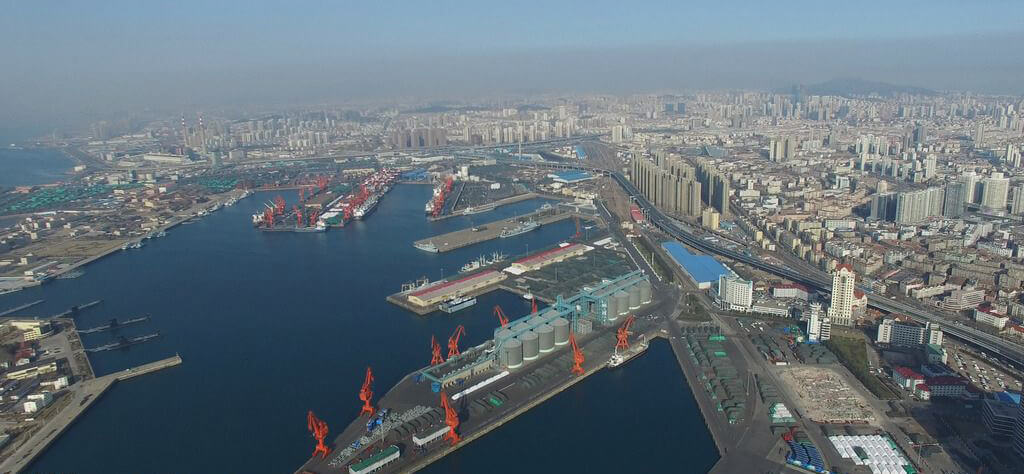
In 2004, the port area was 420 square kilometers. The Port was divided into 4 parts: Dagang Port Area, Zhonggang Port Area, Huangdao Oil Port Port Area and Qianwan Port Port Area.
Qingdao Port’s business covers Shandong, radiating along the Yellow River and reaching Central Asia. As of 2011, It has 18 terminals and 69 berths. As of the end of 2018, It has more than 160 container routes.
In 2019, the cargo throughput exceeded 515 million tons, an increase of 6.1% year-on-year, and the container throughput was 21.01 million TEU, an increase of 8.8% year-on-year; operating income was 12.164 billion yuan, an increase of 3.6% year-on-year; 3.79 billion yuan, an increase of 5.5% year-on-year.
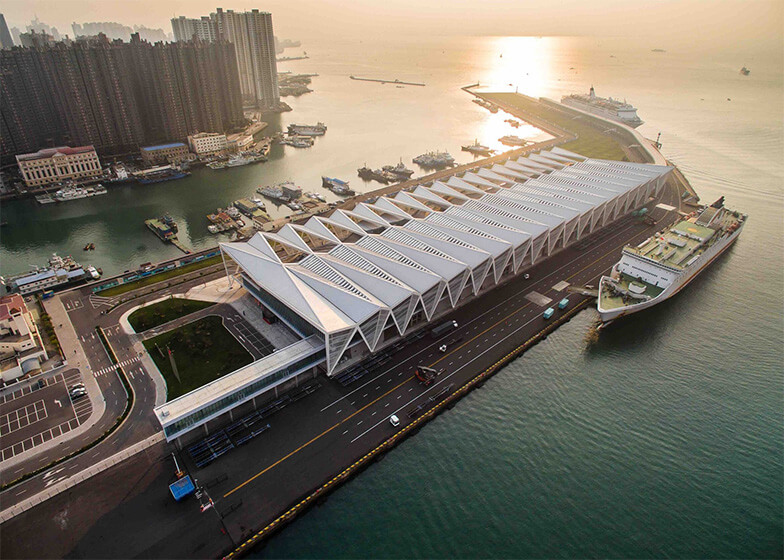
History
In the Ming Dynasty of China (1415), the court approved the “Local Affairs Discussion”, and the ports of Qingdaokou, Nugukou and Jinkou gradually emerged and became maritime commercial ports.
In the Qing Dynasty, the harbor facilities in Qingdao improved. Although the Qing government implemented a “sea ban”, it was tight and loose.
During the Qianlong period (1711-1799), there was a prosperous scene in the port of Jinkou, “connecting the four seas and three rivers.” However, due to the implementation of a closed-door policy, the development has been slow.
In June of the 17th year of Guangxu (1891), after Qingdao was built, it began to build the Qianhai Zhanqiao Iron Wharf and the Xiaoshiji Wharf in front of the General Soldier’s Yamen, also known as the Yamen Bridge, for soldiers to get on and off and load and unload military supplies.
In the eighteenth year of Guangxu in Qing Dynasty (1892), the Qing government built two docks in Qingdao Bay.
Qing Guangxu Twenty-four years (1898) In April, Germany allocated funds to build Qingdao Port.
In the spring of the 27th year of Guangxu in Qing Dynasty (1901), Qingdao Xiaogang Wharf was completed and a large port was built.
In the three years of the Republic of China (1914), during the Japan-German War, The Port was destroyed.
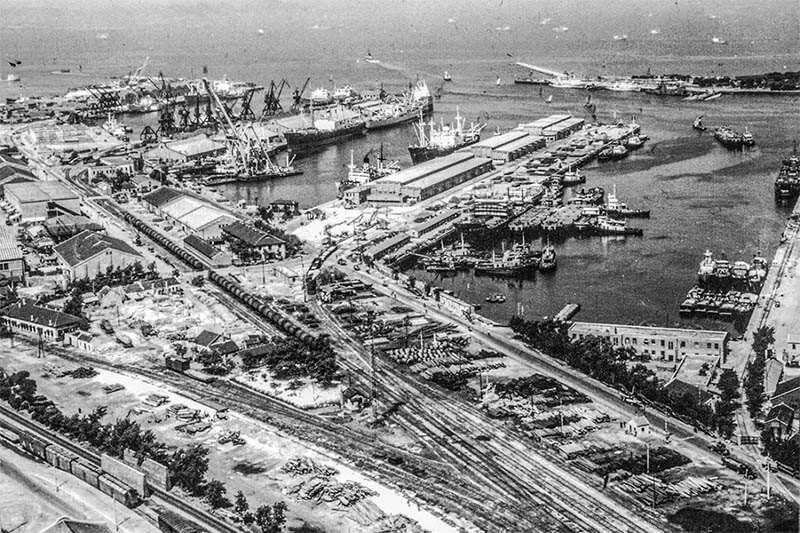
It was not until China’s reform (1979) that Qingdao began large-scale industrialization.
In 1976, Qingdao Port started its first container business.
In 1980, The Port set up a container business section in the third loading and unloading operation area, and opened berth No. 42 as a special operation site, using a coastline of 162 meters, with an international container yard area of 6,800 square meters and a domestic container yard area of 2500 square meters Meter.
On August 6, 1983, It abolished the Container Business Section and established the Qingdao Port Authority Container Company.
In 1985, Qingdao Port No. 8 was completed and put into production, and the container loading and unloading operations moved from No. 42 berth of Pier No. 6 to No. 52 berth of Pier No. 8 as a special berth for container operations.
In 1987, It had the first container handling bridge and two feeder routes.
In 1988, The Port completed a container throughput of 86,000 TEUs at 52 berths, and exceeded the design capacity of 50,000 TEUs at 52 berths.
In 1991, Qingdao Port transformed the No. 47 berth of the golden berth of the old port area, 300 meters long, 13 meters draught, wide rear yard, smooth railway transportation, and good terminal structure, into a container-specific berth.
In early 1992, It opened its first international shipping route and docked the first third-generation container ship.
On April 1, 1996, The Port Container Transport EDI (Electronic Data Interchange) system was officially opened.
In 1997, It was built as a coastal port information center.
In April 1996, Qingdao Port built a 3,000-ton container cold storage.
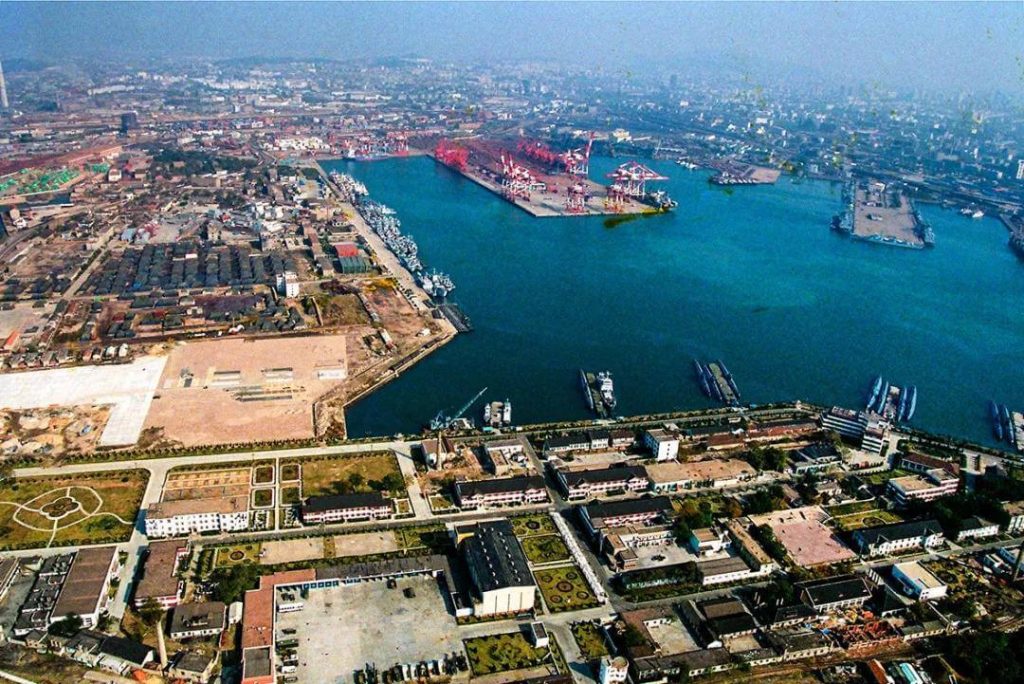
On October 11, 1998, Qingdao Port, together with Jingtang Port and Shandong Haifeng Company, officially opened the Bohai Bay Container Inner Public Branch Line. On November 18, a direct line from Qingdao to New Zealand was opened.
In 1999, It successively held the first voyage ceremonies for Taiwan-East China and North China container liner routes, China-Australia international container liner routes and Far East to Europe container liner routes.
On July 1, 2000, Qingdao Port held its first voyage to the Mediterranean.
On February 24, 2002, It opened an international container route to West Asia.
Since 2016, It Dongjiakou Port General Terminal, 450,000 tons of crude oil terminal and 10 berths have officially put into operation.
In 2017, Qingdao began the construction of a smart port.
On May 11, 2017, the first phase of the fully automated container terminal in Qingdao Port was put into commercial operation.
On November 28, 2019, It’s fully automated terminal (Phase II) went into operation.
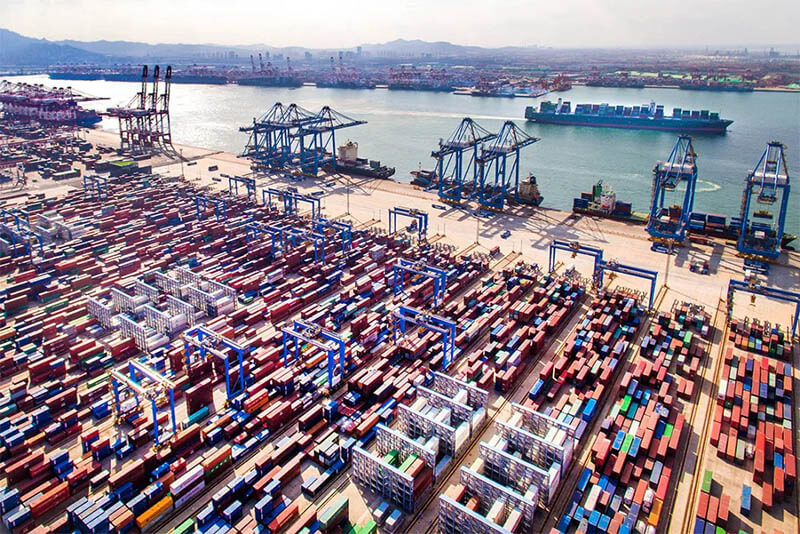
Hardware facilities
Channel berth
Qingdao Port Fairway is divided into extra-port fairway and intra-port fairway. The extra-harbour channel is divided into a main channel (about 22 nautical miles) and two prescribed routes.
In 2005, Qingdao Port had 15 terminals and 73 berths, including 13 operating terminals and 49 operating berths. There are 32 berths above 10,000 tons, 6 berths for 50,000 ton ships, 6 berths for 100,000 ton ships, and 2 berths for 300,000 ton ships.
As of 2011, It has 18 terminals and 69 berths.
Handling facilities
As of March 2019, Qingdao Port Qiangang Branch has 3 ship unloaders, 25 door cranes, and 6 stacker and reclaimers, which can meet the operational capacity needs of large bulk cargo ships of 50-50 thousand tons.
Qingdao Port Dongjiakou Company has 37 large-scale operation equipment and supporting mobile machinery, and 4 ship unloaders, each with a rated unloading rate of 3500 tons per hour. The supporting belt process of more than 21,000 meters runs through all the yards. The unloading rate reaches 10,500 tons/hour.
Fully automated terminal
On May 11, 2017, the first phase of the fully automated container terminal in Qingdao Port was put into commercial operation. Compared with the traditional artificial wharf, the operating efficiency of the first phase of the project has increased by 30%, and the labor has been reduced by 80%. The degree of automation has exceeded that of the world-class ports such as Rotterdam Port.
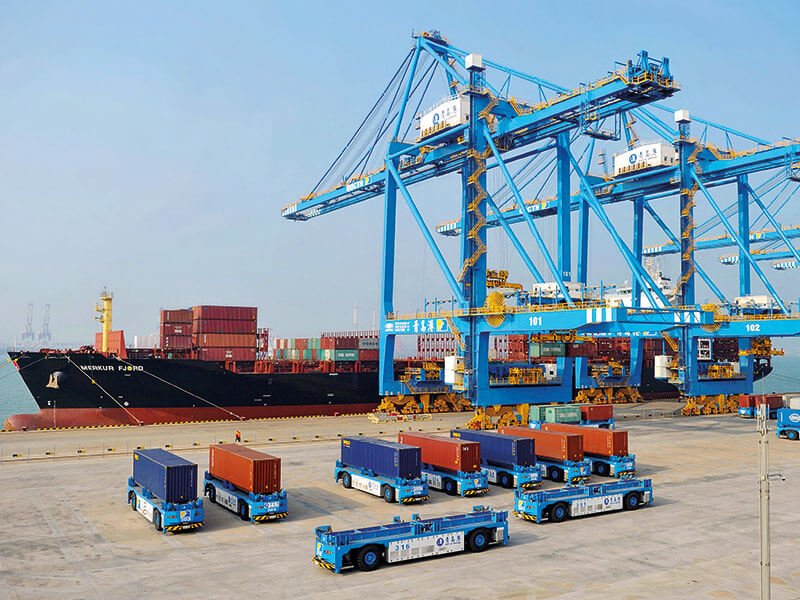
On November 28, 2019, the fully automated terminal (Phase II) of Qingdao Port of Shandong Port was put into operation.
The shoreline of the second phase of this commissioning project is 660 meters long, with 2 berths, and a designed throughput capacity of 1.7 million TEU/year. It is equipped with 9 double-carriage shore bridges (STS), 38 high-speed rail cranes (ASC) and 45 Automatic Guided Vehicle (L-AGV).
operation status
Main business
Qingdao Port is mainly engaged in the loading and unloading services of various import and export goods such as containers, coal, crude oil, iron ore, grain and other international and domestic passenger transportation services.
The Port’s ore loading and unloading operations are mainly concentrated in the former port branch and Dongjiakou branch, providing ore unloading, stacking, storage, evacuation and other logistics services; mixing and screening business; bonded logistics business, etc.
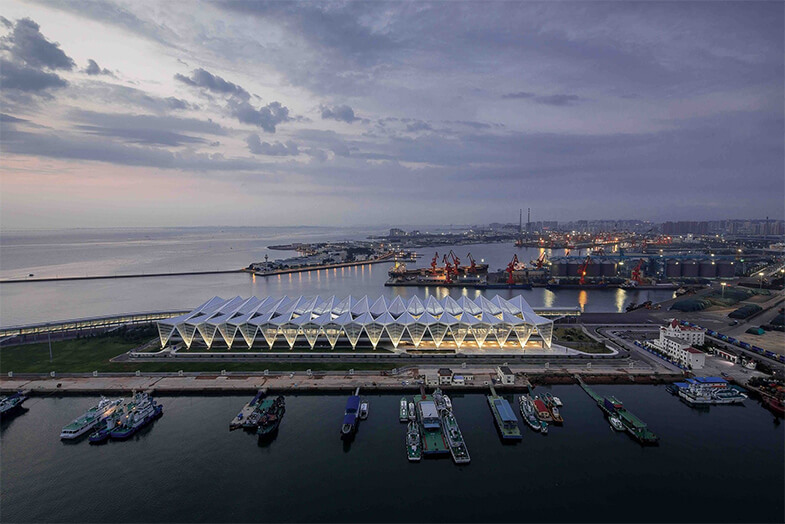
Traffic route
In 2005, Qingdao Port has reached more than 450 ports in more than 130 countries and regions.
As of the end of 2018, Qingdao Port has more than 160 container routes, with more than 70 direct routes to Southeast Asia, the Middle East, the Mediterranean, Europe, the Black Sea, Russia, Africa, and Australia.
The Port has opened a total of 40 trains, including 28 internal trains, 7 external trains, and 5 international trains (including the China-Korea Express).
Freight traffic
- In 1997, the throughput reached 69.16 million tons.
- In 2002, the container throughput completed 3.41 million TEUs, and the Qianwan New Port Area completed a foreign trade container throughput of 1.7 million TEUs.
- In 2004, the throughput reached 161.65 million tons.
- In 2005, the throughput reached 187 million tons; the foreign trade throughput reached 141 million tons, with 143,183 passengers entering and leaving the port.
- In 2006, the throughput reached 200 million tons.
- In 2008, the throughput reached 300 million tons.
- In 2012, the throughput exceeded 400 million tons.
- In 2016, the cargo throughput was 503.6 million tons.
- In 2017, the cargo throughput exceeded 510 million tons, of which container throughput exceeded 18.31 million TEUs.
- In 2018, Qingdao Port completed the operation volume of 18.3 million TEU, and the port’s cargo throughput ranked sixth in the world.
- In 2019, the cargo throughput was 515 million tons, the container throughput was 21.01 million TEU, and the operating income was 12.164 billion yuan.
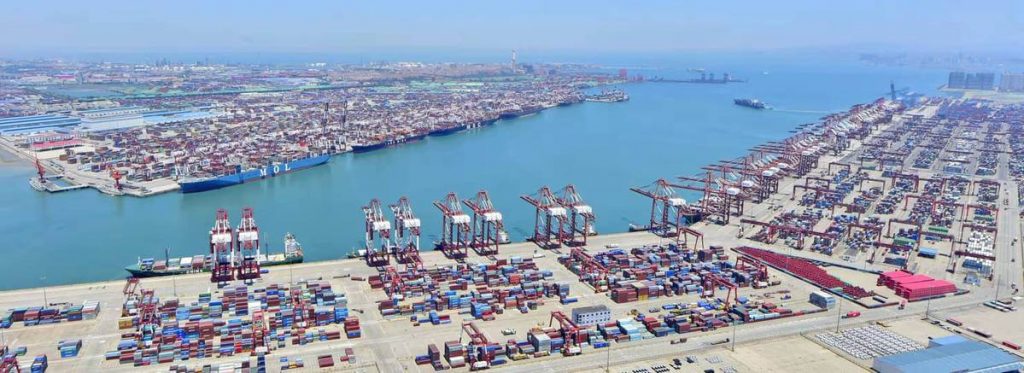
Qingdao Port Data
- Country
- China
- Location
- Jiaozhou Bay, Qingdao City, Shandong Province
- Official name
- 青岛港
- Year of opening
- 1415 AD
- Industrialization date
- 1892
- Status
- In use
- Operator
- Qingdao Port (Group) Co., Ltd.
- Port type
- Deepwater seaport
- Features
- Smart port, Natural port, Artificial port
- Region
- East Asia
- Sea area
- Yellow Sea
- Annual container volume
- 21 million TEU (2019)
- Annual cargo tonnage
- 515 million tons (2018)
- Water area
- 420 square km (2004)
View Qingdao Port on Google Satellite Map
Google satellite maps allow you to see building details more clearly, including natural landscapes such as mountains, rivers, deserts, sea and man-made engineering buildings.
If you are very interested in this engineering building, it is a good idea to click below Google Map icon. We will help you jump to the corresponding location of this building or engineering on Google satellite map.






























































[…] milhões de TEU de contêineres em 2020 e, em 2019, o rendimento de carga do porto ultrapassou 515 milhões de toneladas, o que representa um aumento de 6,1% em relação ao ano anterior. As principais […]
[…] de Qingdao 22 millones TEU de contenedores en 2020 y 2019, el rendimiento de carga portuaria es 515 millones toneladas, un 6,1% más que el año anterior. Las principales operaciones del puerto incluyen el […]
[…] 2,200万 2020 年と 2019 年のコンテナ TEU、港湾貨物処理量は 5億1500万 トン、前年比6.1%増加。 港の主な業務には輸出入の処理が含まれます。 […]